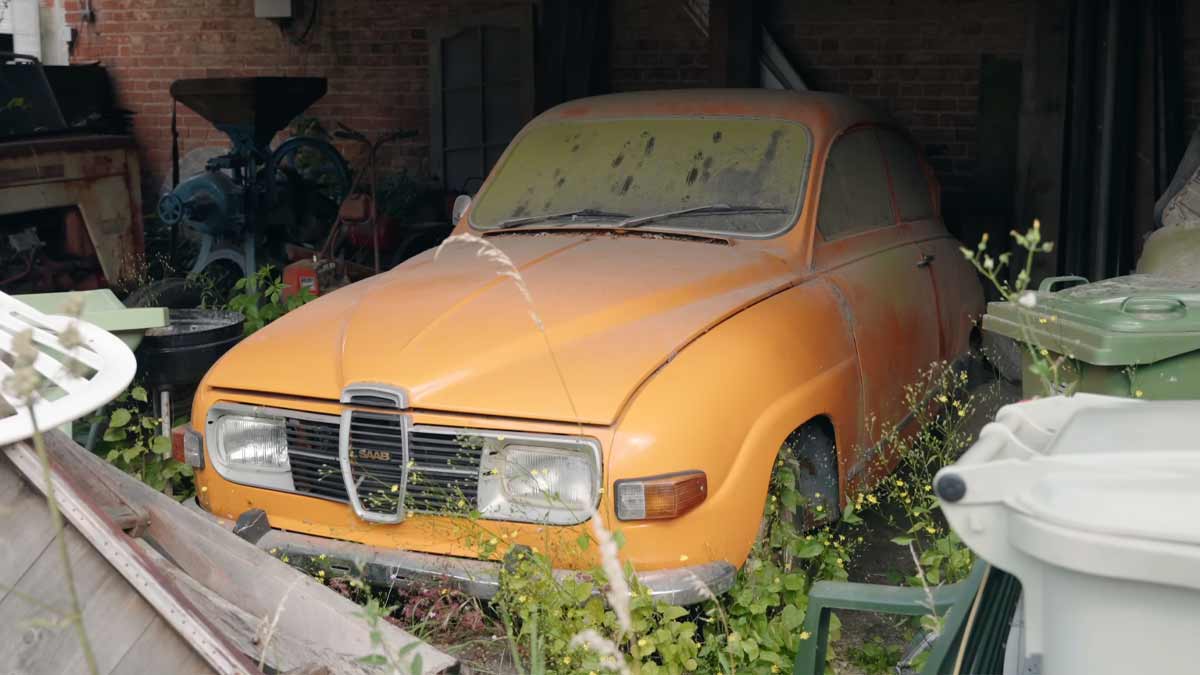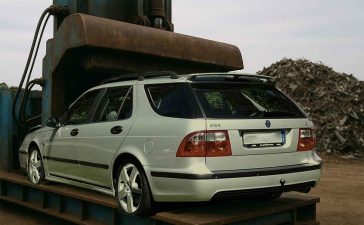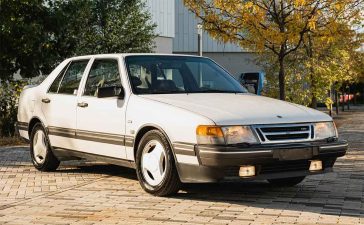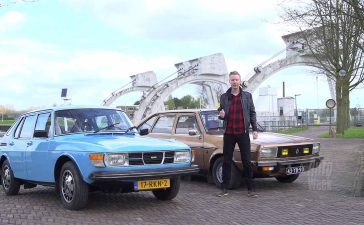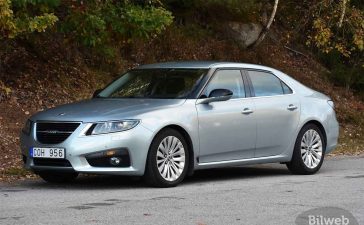A preserved life, not a forgotten one
Barn finds are often framed as rescues from neglect. This story is different. In a North Lincolnshire farmyard, under the quiet company of tractors and machinery, rested a bright Tangerine Orange 1973 Saab 96. It hadn’t been abandoned. It had been kept safe.
Lydia, its sole owner, had trusted the local family garage with her car since the day she bought it. When old age ended her driving, she didn’t sell it, and she certainly didn’t scrap it. She gave it to the garage, telling them simply: keep it safe. For over three decades, they did exactly that.
The Saab sat in a lean-to, wax-oiled underneath, with paint once refreshed and preserved. This wasn’t storage by accident. It was storage by duty—a continuity that would one day make all the difference.
The woman who never drove another car
Lydia wasn’t a Saab enthusiast in the way we use the term today. She never joined clubs or swapped stories at shows. But she was loyal in a way few owners are now.
Her Saab 96 was a wedding gift—her first and only car. She learned to drive in it, used it daily, and even in her eighties she was still behind its wheel. Locals half-jokingly warned one another to give her space when Lydia was on the road.
That kind of devotion is rare, yet it echoes another remarkable story. In Norway, Åse Kleveland—celebrated singer, politician, and cultural figure—has spent more than half a century behind the wheel of her Saab Sonett. Different women, different backgrounds, but the same fierce loyalty: a lifelong bond with a single Saab that became more than transportation.
Without power steering, the 96 demanded effort. Lydia compensated by inflating the front tires to 60 psi so she could muscle it around. Yet she never thought of replacing it. Even when her insurer once provided a modern Ford Fiesta as a loaner, she panicked: “I can’t drive this thing.”
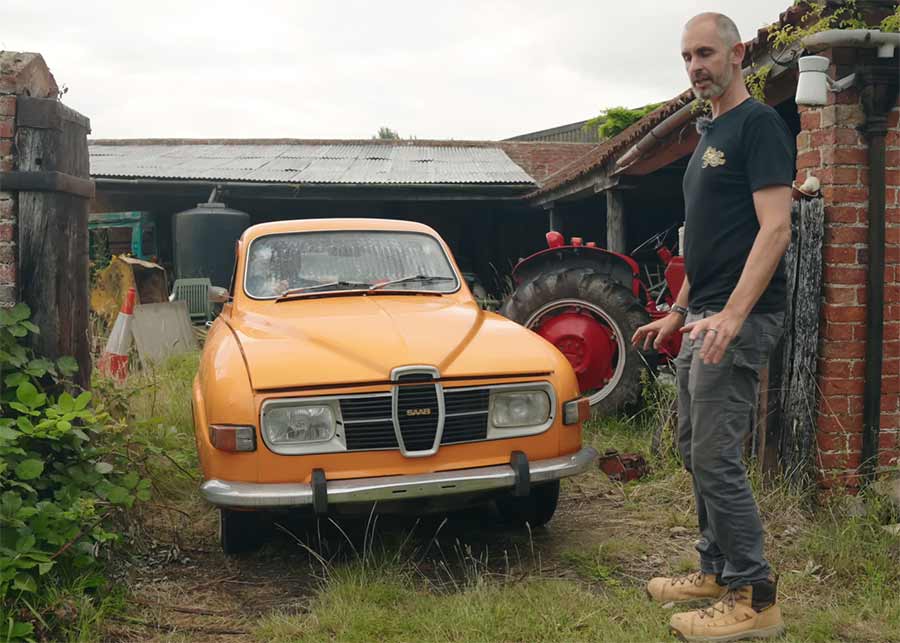
The garage’s solution was as Saab as it gets: they bought another identical orange 96, same year, same spec, and delivered it to her as a courtesy car. She refused to accept it. Standing on her driveway, she argued, “You’ve changed the registration.” She was right in her own way. She could tell it wasn’t her Saab. That second 96 still sits in a field, untouched—a monument to the idea that some cars simply can’t be substituted.
A swedish saloon built to endure
By 1973, the Saab 96 had already become a classic of its own making. Originally launched in 1960, it bore the unmistakable hand of Sixten Sason, Saab’s aircraft-trained designer, who gave it the teardrop form that made even family saloons aerodynamic.
The V4 era, beginning in 1967, marked a turning point. Out went the smoky three-cylinder two-stroke; in came a 1.5-liter Ford-sourced V4, tuned for Saab with a distinct character. Power was modest—65 hp, 0–60 in 16 seconds—but it was reliable, tractable, and made the car a proper daily driver. Front-wheel drive meant stability in snow, while the compact layout left an engine bay that could be serviced by human hands rather than contortionists.
Inside, the cabin was simple but functional. Column shift freed up the floor, while thoughtful touches—a glovebox latch designed for winter gloves, rear pop-out windows for ventilation—reminded you Saab’s designers thought about real life. Heated seats were available, years before rivals even considered them.
The moment of truth
When Jonny Smith of The Late Brake Show turned up at the farmyard, he expected hours of coaxing. What he found was the result of decades of proper care.
The engine bay was dusty but sound. The underbody, protected by wax oil, had resisted the creeping rust that devours so many UK classics. The ignition points and condenser had been replaced years earlier and sat waiting. Even a brand-new spare coil was still in the boot.
A little emery paper cleaned the oxidized points. Fresh fuel was gravity-fed from a safe container. Jonny turned the key.
The Saab didn’t cough or complain. It started immediately. A smooth, rhythmic idle filled the air—no smoke, no drama, no hesitation. Jonny looked at the camera in disbelief: “That is not fake.”
Watch the Moment History Ignites
There are stories you can tell, and then there are moments you need to see. The exact second the Saab 96 fires up – Jonny’s stunned silence, Danny’s quiet smile, the mechanical purr rising from decades of stillness—is something no written word can fully capture.
Experience it for yourself:
Moments later, the column shift clicked into gear, and the 96 rolled down the farm lane under its own power for the first time in 32 years. Even the brakes gave a pedal. This wasn’t luck. It was the logical outcome of engineering built to last, and a garage that never forgot the promise it had been given.
Why this 96 matters
Over 329,000 Saab 96s were built. Many survive, some restored, some abandoned. What sets Lydia’s car apart isn’t rarity, or horsepower, or motorsport glory. It’s the continuity of a single life lived with one machine.
It represents what Saab always stood for: intelligent, durable engineering, not glamour. A car that could sit silent for three decades and then run as though nothing happened. A car whose owner refused to trade it for something newer because nothing newer felt right.
Danny, who now holds the keys, admits he never wanted it in the 1990s. He was into turbos and fast Fords. His father told him: “One day, you’ll want that car.” That day has arrived.
The future of Lydia’s Saab
The 96 is now being prepared for sale, though the exact path—auction or private buyer—remains open. What’s certain is that this car doesn’t belong in a sterile showroom. It deserves to drive again, to appear at local shows, to remind people what Saab durability really means.
Whoever buys it won’t just own a car. They’ll inherit a story: of Lydia, of a small village garage, of Saab’s unique bond with its drivers. It’s proof that some machines don’t fade when parked—they wait.

